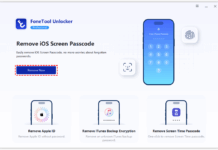Time-tracking software may benefit all sorts of businesses, no matter how big or small they are. Apps like these are well worth the investment due to their ability to monitor team productivity, manage finances, and more. The bottom line for every business is efficiency, and the usage of this technology has been shown to boost productivity, which in turn has increased profitability.
![]()
Better task management is only one of the numerous advantages of using time tracker software. There are various minor duties required in operating a company, and most of us are unaware of how many tasks are being handled at the same time. Using this type of software guarantees that all tasks are completed on time and that none are overlooked. Below are six benefits that using a time tracker can bring to your company.
Raise Productivity in the Workplace
With time-tracking software, everything that an employee does over the course of a workday can be analyzed. This includes everything from the hour spent collecting information to the twenty minutes of the lunchtime that were spent on a fast conference call. Employees will have a better idea of how much time was spent on each activity and may readjust their schedules accordingly.
For example, the lunchtime break that they used on a conference call should have allowed them to psychologically refresh before tackling the following activity. Instead, they continued working and now they’re burned out and unable to perform at their best. However, with time-tracking software, the employee is able to have a comprehensive look into their workflow and make changes when required.
Analyze Team Efficiency
The most widespread misunderstanding regarding time tracking software is that it just keeps tabs on when the workday begins and ends. Nonetheless, one of the benefits is being able to keep tabs on everything that goes on between meetings, including project work and feedback sessions with clients.
This allows you to assess the current workflow of your team and identify any potential obstacles. For example, the task you gave to your team should have taken an hour to finish, but the time tracker shows that it took three hours. With this information, you can consult your team and find out what was the issue that held them back for 2 more hours.
Boost Employee Responsibility
The ability to keep tabs on how much time employees spend in the office is a major perk of time-tracking software. You can tell when they arrive (virtually) and when they depart for the day. Most importantly, you have the opportunity to evaluate their performance while they are on the payroll.
For instance, instead of the stipulated half-hour lunch break, they might have taken the whole hour. The program monitors their time at work and ensures they are responsible for their performance.
Simplify Employee Payroll Procedures
The standard payroll process requires a significant amount of human data input. You must gather all staff time cards for each department. Then, use their hourly wage rate to determine how much money they made last week. Not counting any potential deductions, that is.
Using a time monitoring tool streamlines the whole payroll procedure. Just enter worker details like hourly pay, and the software will handle everything else. There is still the option to enter data by hand if you need to make changes to their weekly pay.
Analytical Task Viewing
Common metrics in time monitoring software provide graphical representations of time spent on certain tasks. How long did it take you to do the job, and how did you spend that time?
For example, the first half-hour you spent rebuilding your website’s front page, while the following hour was spent video chatting with a customer. With these insights, you can make the most of what you have on hand. Perhaps another member of the team can manage to schedule and attend meetings so that the web designer can devote more time to the redesign. Especially if the clock is ticking and the relaunch of your website is drawing near.
Easy Client Billing
Recording billable hours with the help of a time-tracking system makes it much simpler to send out invoices to customers. For example, team A spent 20 hours working on the client’s project this week. Meanwhile, team B put in an additional five hours of work devoted to studying and reworking. With a time tracker, you avoid transferring data between programs or manually entering billable hours.
Final Thoughts
While time monitoring software ensures that workers aren’t slacking off, it also allows them to manage their own schedules. They can figure out how long things take to do and keep an eye on projects to ensure they’re running well. Similarly, your company compiles the necessary information to accurately bill customers and process payroll.



